 A Czech suspected of being Counter intelligence service Official suffering from “amnesia”, found in a snowdrift in Oslo last December, has began regaining fragments of memory after speaking with his family over the phone. It has come to light that the man, who has gone under the name of John Smith since his rescue, worked for the Czech Interior Ministry. With every turn, the mystery surrounding a 36-year-old calling himself john Smith has deepened, ago it was not ever clear he was Czech, although he understood the language, along with Slovak, Russian and Polish.Since, he has been identified by his family after his photo was officially posted and at the weekend he reportedly spoke with them for three hours, helping him regain some fragments of lost memories.
A Czech suspected of being Counter intelligence service Official suffering from “amnesia”, found in a snowdrift in Oslo last December, has began regaining fragments of memory after speaking with his family over the phone. It has come to light that the man, who has gone under the name of John Smith since his rescue, worked for the Czech Interior Ministry. With every turn, the mystery surrounding a 36-year-old calling himself john Smith has deepened, ago it was not ever clear he was Czech, although he understood the language, along with Slovak, Russian and Polish.Since, he has been identified by his family after his photo was officially posted and at the weekend he reportedly spoke with them for three hours, helping him regain some fragments of lost memories.
But satisfactory answers are not likely to be revealed for some time, the big questions include why he may have been to Oslo, Perhaps the most intriguing development were reports that John Smith was employed by the Czech police or the Interior Ministry, told by his father that he had been “WORKING ON SOMETHING BIG” at the time of his alleged abduction. There was the possibility “HE HAD SECURITY CLEARANCE AND ACCESS TO SENSITIVE INFORMATION”. The country’s interior minister, Milan Chovanec, briefly addressed the question on Sunday:
“we are looking into the question of whether he worked for the police or the Czech Interior Ministry. Certainly it is something that requires out attention and we are taking it very seriously. I cannot rule out he worked either for the police or for the ministry and will tell the public when we know more.”
Interior Ministry spokesman Pavel Novak told to media that the “ministry cannot provide any details because information on a person´s employment is a personal data and is protected.”
According to Sunday information by the Norwegian public television NRK, the man starts remembering his past life, which has also been thanks to his phone call with the parents on Saturday. In it he was told that he worked for the “Czech police as a consultant” in the past.
His father will only travel to Norway to meet with his son. In any case, As for the victim’s chances of additional recovery from amnesia? Specialists say much will depend on the nature of the injury but that some memories should slowly come back, although the process can take anywhere from weeks to years. A leading Czech neurologist has pointed out the loss of episodic memory ie. autobiographical knowledge suggested damage to the right frontal lobe but understandably could not make a precise diagnosis without information from MRIs and other tests conducted. In any event, the case is in the hands of Norwegian investigators and the Czech police – who, even were they so inclined – cannot reveal more during an ongoing investigation. It will be some time yet before the public learns more about the true identity of John Smith.
By Nadarajah Sethurupan

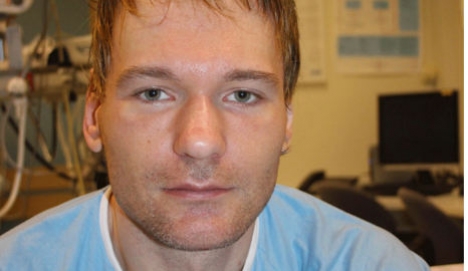
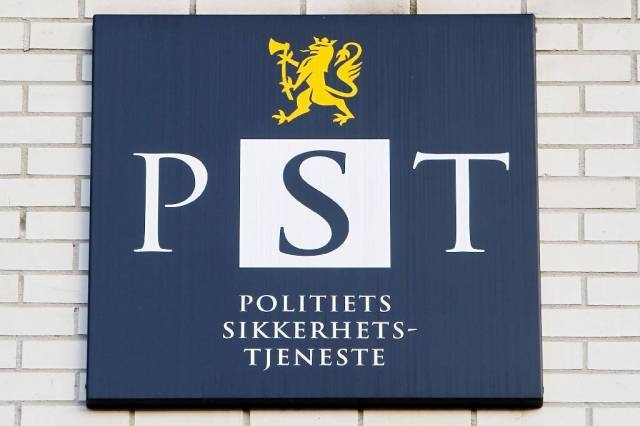
 Back in the 1950s, there were reportedly many sightings of UFOs in the skies over Norway. Finally an explanation has been given, over 60 years later. The CIA decided to let Norway know that it was their fault, via Twitter of all things. Their tweet read: “Do you remember the reports of unusual activity in the sky in the 50’s? That was us.” They apparently then went on to explain that all the sightings of mysterious flying crafts, traveling at high speed with flashing lights, were actually test flights of secret US military planes.They reckon they were top secret U2 spy planes, flying at altitudes of 18,000 meters. This would be way above most normal passenger planes and other military aircraft.
Back in the 1950s, there were reportedly many sightings of UFOs in the skies over Norway. Finally an explanation has been given, over 60 years later. The CIA decided to let Norway know that it was their fault, via Twitter of all things. Their tweet read: “Do you remember the reports of unusual activity in the sky in the 50’s? That was us.” They apparently then went on to explain that all the sightings of mysterious flying crafts, traveling at high speed with flashing lights, were actually test flights of secret US military planes.They reckon they were top secret U2 spy planes, flying at altitudes of 18,000 meters. This would be way above most normal passenger planes and other military aircraft.
 Norwegian Intelligence Service (PST) wants to obtain permission to monitor all Norwegians’ online activities. Ministry of Justice keeps the door open for the proposal. PST-chief Alana Bjørnland wants to give security permission to monitor all Norwegians’ activity on the internet by using so-called big data technologies. Minister of Justice and Public Security, Anders Anundsen is positive about the PST chief’s desire to strengthen national security.- It is important that PST has the necessary tools to fulfill its security mission, says Anundsen to Klassekampen.
Norwegian Intelligence Service (PST) wants to obtain permission to monitor all Norwegians’ online activities. Ministry of Justice keeps the door open for the proposal. PST-chief Alana Bjørnland wants to give security permission to monitor all Norwegians’ activity on the internet by using so-called big data technologies. Minister of Justice and Public Security, Anders Anundsen is positive about the PST chief’s desire to strengthen national security.- It is important that PST has the necessary tools to fulfill its security mission, says Anundsen to Klassekampen.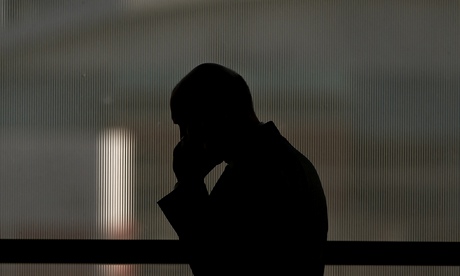
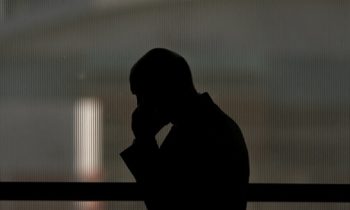 Fake mobile base stations, which can be used for eavesdropping or spying, have been discovered near Norway’s parliament and within the executive government quarter in central Oslo, Aftenposten news outlet revealed in its two-month independent investigation. Whoever is behind this suspicious activity, they are able to intercept calls, monitor everything taking place in downtown Oslo and track movements in the vicinity of government offices, Aftenposten stressed.
Fake mobile base stations, which can be used for eavesdropping or spying, have been discovered near Norway’s parliament and within the executive government quarter in central Oslo, Aftenposten news outlet revealed in its two-month independent investigation. Whoever is behind this suspicious activity, they are able to intercept calls, monitor everything taking place in downtown Oslo and track movements in the vicinity of government offices, Aftenposten stressed.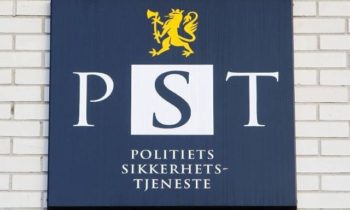 Much of the alleged illegal surveillance equipment in the Oslo area, discovered by the newspaper Aftenposten just before Christmas, has now been turned off, the newspaper reports. Aftenposten reported in mid-December that it had located a number of fake base stations for mobile phones, which were allegedly used to monitor mobile phone traffic in the Oslo area. The newspaper wrote that it had registered a number of so-called IMSI – catchers operating near key official buildings in Oslo, such as the Parliament (Stortinget), the Prime Minister’s residence and other key political buildings and financial central.
Much of the alleged illegal surveillance equipment in the Oslo area, discovered by the newspaper Aftenposten just before Christmas, has now been turned off, the newspaper reports. Aftenposten reported in mid-December that it had located a number of fake base stations for mobile phones, which were allegedly used to monitor mobile phone traffic in the Oslo area. The newspaper wrote that it had registered a number of so-called IMSI – catchers operating near key official buildings in Oslo, such as the Parliament (Stortinget), the Prime Minister’s residence and other key political buildings and financial central.
 Norwegian journalists and experts in the field of telecommunications security believe that telephones of embassies of Russia and France in the Norwegian capital of Oslo could be tapped. According to Norwegian newspaper Aftenposten, diplomatic missions of the United Kingdom, Venezuela and Finland are also located in the area, where wiretapping equipment was used. With the help of special equipment, Norwegian reporters detected numerous signs of so-called IMSI-interceptors near the buildings of the parliament, office and personal residence of the prime minister of Norway, embassies of the USA and Israel, the building of the Central Bank of Norway, as well as near the offices of several large law firms and financial institutions.After the publication of the controversial material, the equipment that Aftenposten employees used stopped catching signals proving the presence of wiretapping devices.
Norwegian journalists and experts in the field of telecommunications security believe that telephones of embassies of Russia and France in the Norwegian capital of Oslo could be tapped. According to Norwegian newspaper Aftenposten, diplomatic missions of the United Kingdom, Venezuela and Finland are also located in the area, where wiretapping equipment was used. With the help of special equipment, Norwegian reporters detected numerous signs of so-called IMSI-interceptors near the buildings of the parliament, office and personal residence of the prime minister of Norway, embassies of the USA and Israel, the building of the Central Bank of Norway, as well as near the offices of several large law firms and financial institutions.After the publication of the controversial material, the equipment that Aftenposten employees used stopped catching signals proving the presence of wiretapping devices.
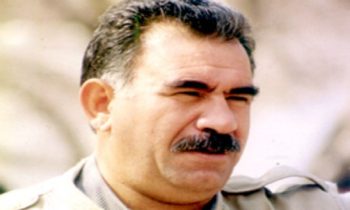 Omer Altiparmak, the former head of the Turkish intelligence department of the National Police Department, has claimed that Adem Uzun, a senior member of the outlawed Kurdistan Workers’ Party (PKK) responsible for the organization’s foreign affairs, leaked audio recordings that revealed secret talks took place between Turkish intelligence officials and members of the PKK in Oslo in 2010.
Omer Altiparmak, the former head of the Turkish intelligence department of the National Police Department, has claimed that Adem Uzun, a senior member of the outlawed Kurdistan Workers’ Party (PKK) responsible for the organization’s foreign affairs, leaked audio recordings that revealed secret talks took place between Turkish intelligence officials and members of the PKK in Oslo in 2010.
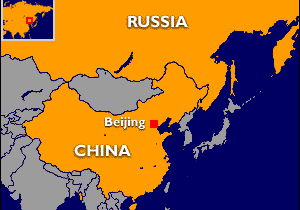 Police Security Service director Benedicte Bjørnland believes that Russia and China espionage services pose the greatest danger to Norway. “The two states which Norway has no security policy cooperation with, and that also have the largest intelligence capacity by far, are Russia and China. Of these, we consider Russian intelligence to possess the greatest potential for damaging Norwegian interests.
Police Security Service director Benedicte Bjørnland believes that Russia and China espionage services pose the greatest danger to Norway. “The two states which Norway has no security policy cooperation with, and that also have the largest intelligence capacity by far, are Russia and China. Of these, we consider Russian intelligence to possess the greatest potential for damaging Norwegian interests.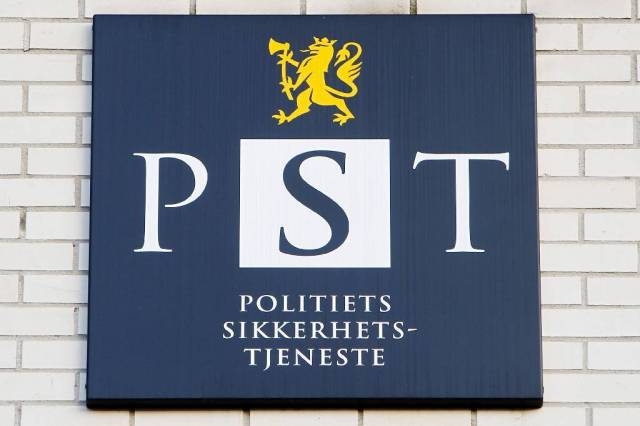
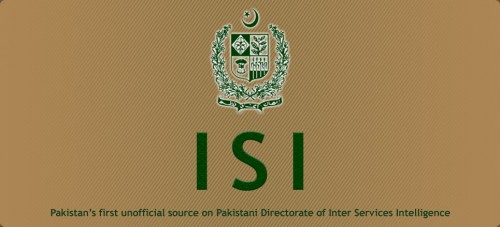
 Oslo is home to two infamous gangs whose members are mainly Pakistani Norwegians. They are known as the A gang and B gang or A-Gjengen and B-Gjengen. According to an article in Pakistan’s Daily Times, both gangs are run by criminals within Oslo’s immigrant Pakistani community.In 2006, tension between the Pakistani-dominated gang Young Guns and B-Gjengen led to an open gun battle in broad daylight at Oslo’s popular Aker Brygge Complex on the waterfront. Many key gang members were arrested and others fled the country.
Oslo is home to two infamous gangs whose members are mainly Pakistani Norwegians. They are known as the A gang and B gang or A-Gjengen and B-Gjengen. According to an article in Pakistan’s Daily Times, both gangs are run by criminals within Oslo’s immigrant Pakistani community.In 2006, tension between the Pakistani-dominated gang Young Guns and B-Gjengen led to an open gun battle in broad daylight at Oslo’s popular Aker Brygge Complex on the waterfront. Many key gang members were arrested and others fled the country.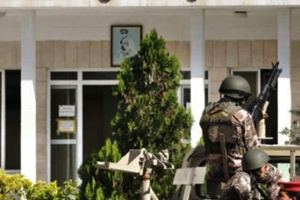

 Two Iranian PhD students have sued the Norwegian government after being expelled from the country on suspicion of gathering information that could aid Iran’s nuclear program. Hamideh Kaffash and Shanin Akbarnejad both enrolled at the Norwegian University of Science and Technology, in the autumn of 2014.Both were pursuing PhDs in metallurgy, planning to spend 3 years in the city of Trondheim.
Two Iranian PhD students have sued the Norwegian government after being expelled from the country on suspicion of gathering information that could aid Iran’s nuclear program. Hamideh Kaffash and Shanin Akbarnejad both enrolled at the Norwegian University of Science and Technology, in the autumn of 2014.Both were pursuing PhDs in metallurgy, planning to spend 3 years in the city of Trondheim.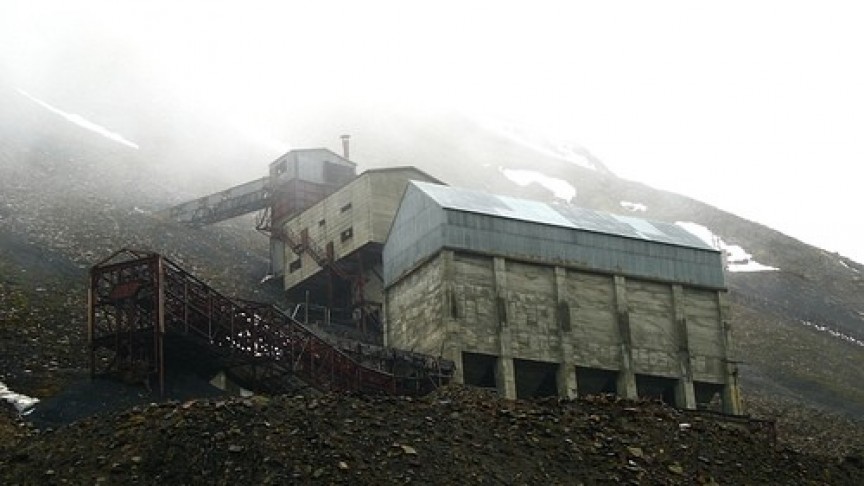
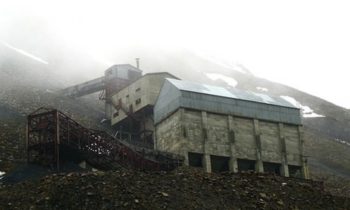 The UN is urging Norway to shut down its coal mining operations on the Arctic archipelago of Svalbard due to concerns due to a clash of interest with the islands’ major functionality of climate change research. Executive secretary on climate change for the UN, Christiana Figueres, said that Svalbard is a bastion of climate change research and that this and coal mining fits very poorly together.She also cited that Norway has been one of the global leaders when it comes to sustainable energy programmes and green living.
The UN is urging Norway to shut down its coal mining operations on the Arctic archipelago of Svalbard due to concerns due to a clash of interest with the islands’ major functionality of climate change research. Executive secretary on climate change for the UN, Christiana Figueres, said that Svalbard is a bastion of climate change research and that this and coal mining fits very poorly together.She also cited that Norway has been one of the global leaders when it comes to sustainable energy programmes and green living.

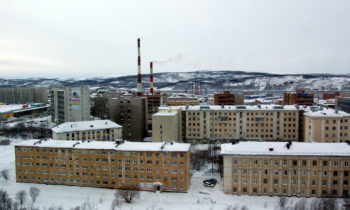 Despite a cold political climate, the United States and Russia cooperated on a secret September voyage with highly enriched uranium from Poland to Murmansk, Russia. Norwegian radiation authorities were not informed before the vessel sailed into Norway’s economic zone. The head of Vardø Vessel Traffic Service, Ståle Sveinungsen, confirmed to the Barents Observer that the vessel Mikhail Dudin was carrying a load of highly radioactive material when it sailed along the coast of Norway two weeks ago.“That is correct. The vessel entered Vardø Traffic Service’s systems on the evening on Sept. 2 and sailed out again in the afternoon on Sept. 8,” Sveinungsen said.
Despite a cold political climate, the United States and Russia cooperated on a secret September voyage with highly enriched uranium from Poland to Murmansk, Russia. Norwegian radiation authorities were not informed before the vessel sailed into Norway’s economic zone. The head of Vardø Vessel Traffic Service, Ståle Sveinungsen, confirmed to the Barents Observer that the vessel Mikhail Dudin was carrying a load of highly radioactive material when it sailed along the coast of Norway two weeks ago.“That is correct. The vessel entered Vardø Traffic Service’s systems on the evening on Sept. 2 and sailed out again in the afternoon on Sept. 8,” Sveinungsen said.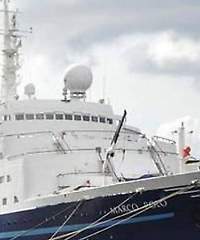
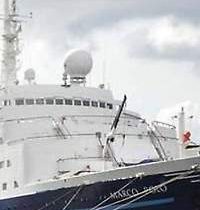 A Norwegian local resident told Norwegian broadcaster NRK he thought the cruise ship took a chance by sailing close to the rocky coast on its way into the quay. This Bahamas-registered cruise ship with almost one thousand British tourists on board that ran aground in northern Norway on Saturday managed to get free using its own engines and high tides, rescue services said.The 176-meter (580-foot) “Marco Polo” ship later docked at a quay in Buksnesfjord and seemed to “function normally,” the services said.
A Norwegian local resident told Norwegian broadcaster NRK he thought the cruise ship took a chance by sailing close to the rocky coast on its way into the quay. This Bahamas-registered cruise ship with almost one thousand British tourists on board that ran aground in northern Norway on Saturday managed to get free using its own engines and high tides, rescue services said.The 176-meter (580-foot) “Marco Polo” ship later docked at a quay in Buksnesfjord and seemed to “function normally,” the services said.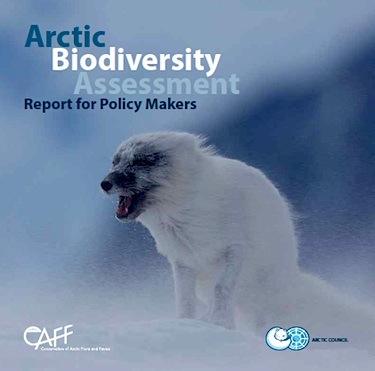
 Arctic Biodiversity Congress gathers Arctic leaders to discuss sustainability- Trondheim, Norway, December 2-4, 2014. Over 400 Arctic leaders, scientists, government representatives, indigenous peoples, and members of industry and non-governmental organizations are meeting in Trondheim, Norway to discuss the future of Arctic nature and sustainability at the Arctic Biodiversity Congress, December 2-4, 2014.“Climate change is by far the most serious threat to Arctic biodiversity, but it does not act in isolation”, says Tine Sundtoft, Minister for Climate and Environment. “We need to understand all of the changes happening in the Arctic so we can better prepare our policy in the region. This Congress will help inform the appropriate responses.”
Arctic Biodiversity Congress gathers Arctic leaders to discuss sustainability- Trondheim, Norway, December 2-4, 2014. Over 400 Arctic leaders, scientists, government representatives, indigenous peoples, and members of industry and non-governmental organizations are meeting in Trondheim, Norway to discuss the future of Arctic nature and sustainability at the Arctic Biodiversity Congress, December 2-4, 2014.“Climate change is by far the most serious threat to Arctic biodiversity, but it does not act in isolation”, says Tine Sundtoft, Minister for Climate and Environment. “We need to understand all of the changes happening in the Arctic so we can better prepare our policy in the region. This Congress will help inform the appropriate responses.”
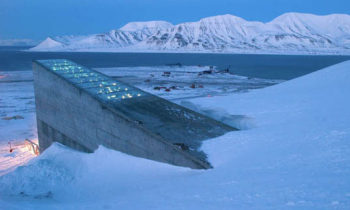 The United Nations called on Norway last summer to close its coal mining operation on the Svalbard Arctic archipelago. It did. The government of Norway, which has the world’s largest sovereign wealth fund ($860bn), has also announced plans to divest from coal. This means the wealth fund will divest from 14 coal mining companies, one coal-fired generator, five tar-sands oil producers and two cement makers (since cement is produced by burning coal).This is being described as a giant step forward in the fossil fuel shutoff movement.
The United Nations called on Norway last summer to close its coal mining operation on the Svalbard Arctic archipelago. It did. The government of Norway, which has the world’s largest sovereign wealth fund ($860bn), has also announced plans to divest from coal. This means the wealth fund will divest from 14 coal mining companies, one coal-fired generator, five tar-sands oil producers and two cement makers (since cement is produced by burning coal).This is being described as a giant step forward in the fossil fuel shutoff movement.

 The so-called “doomsday vault” located on the Norwegian archipelago of Svalbard has received its first delivery of forest tree species seeds – a Norway spruce and a Scots pine. The depository, which first opened in 2008, is attempting to preserve all global food crop seeds in the event of catastrophic natural or man-made disasters, according to the Beacon Review. The scientists there are hoping to monitor long-term genetic changes in natural forests.“The possibility to have seed samples stored in the vault is a great opportunity to complement our forest tree gene conservation, which is based on in situ gene reserve forests,” Dr. Mari Rusanen, a researcher for Natural Resources Institute Finland (Luke), one of the organizations involved in the seed collection, told BBC News on Sunday.
The so-called “doomsday vault” located on the Norwegian archipelago of Svalbard has received its first delivery of forest tree species seeds – a Norway spruce and a Scots pine. The depository, which first opened in 2008, is attempting to preserve all global food crop seeds in the event of catastrophic natural or man-made disasters, according to the Beacon Review. The scientists there are hoping to monitor long-term genetic changes in natural forests.“The possibility to have seed samples stored in the vault is a great opportunity to complement our forest tree gene conservation, which is based on in situ gene reserve forests,” Dr. Mari Rusanen, a researcher for Natural Resources Institute Finland (Luke), one of the organizations involved in the seed collection, told BBC News on Sunday.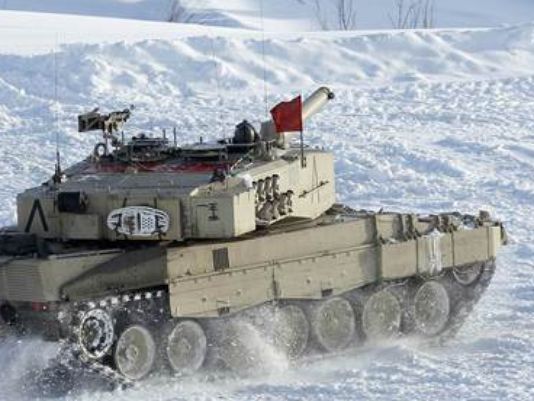
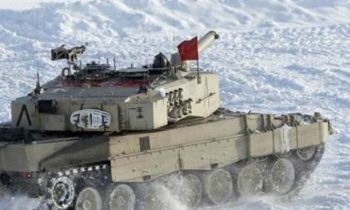 As Russia strengthens its naval, air and ground forces in its northern territories, Norway has responded by scaling-up manpower, equipment and Arctic combat units as part of a broader reinforcement of its High North defenses. Norway’s program, part of the Norwegian Defense Forces’ (NDF) Smart Defense strategy, comprises a strong Arctic-focused dimension in funding and resource allocation.The Smart Defense approach to High North military reinforcement has, since 2010, placed higher priority on Arctic-class specialized equipment procurement coupled with more intensive training for High North-deployed units. The goal is to produce combat-ready modular units that can fight independently or alongside NATO forces.
As Russia strengthens its naval, air and ground forces in its northern territories, Norway has responded by scaling-up manpower, equipment and Arctic combat units as part of a broader reinforcement of its High North defenses. Norway’s program, part of the Norwegian Defense Forces’ (NDF) Smart Defense strategy, comprises a strong Arctic-focused dimension in funding and resource allocation.The Smart Defense approach to High North military reinforcement has, since 2010, placed higher priority on Arctic-class specialized equipment procurement coupled with more intensive training for High North-deployed units. The goal is to produce combat-ready modular units that can fight independently or alongside NATO forces.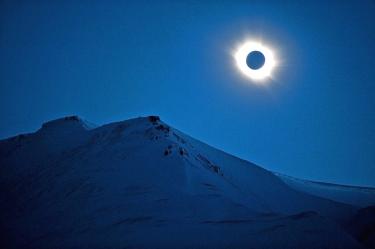
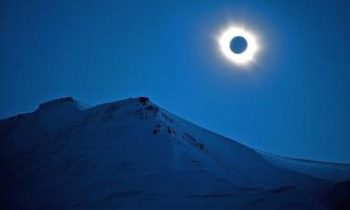 Sky-gazers in the Arctic were treated to a perfect view of a total solar eclipse yesterday as the moon completely blocked out the sun in a clear sky, casting a shadow over Norway’s remote archipelago of Svalbard. People shouted, cheered and applauded as Longyearbyen, the main town in Svalbard, plunged into darkness. The skies were clear, offering a full view of the sun’s corona — a faint ring of rays surrounding the moon — that is only visible during a total solar eclipse.Earlier, a blanket of clouds in the Faeroe Islands blocked thousands of people there from experiencing the full effect of the total eclipse.
Sky-gazers in the Arctic were treated to a perfect view of a total solar eclipse yesterday as the moon completely blocked out the sun in a clear sky, casting a shadow over Norway’s remote archipelago of Svalbard. People shouted, cheered and applauded as Longyearbyen, the main town in Svalbard, plunged into darkness. The skies were clear, offering a full view of the sun’s corona — a faint ring of rays surrounding the moon — that is only visible during a total solar eclipse.Earlier, a blanket of clouds in the Faeroe Islands blocked thousands of people there from experiencing the full effect of the total eclipse.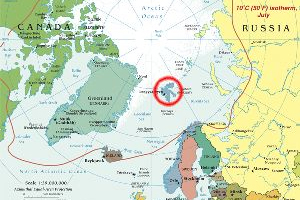

 At the site of a rapidly shrinking glacier in the Norwegian Arctic, United Nations Secretary-General Ban Ki-moon stressed the need for the international community to “take action now” to fight climate change. “I am just close to 250 metres to the glacier. It looks magnificent. But at the same time, I am alarmed that there are so many cracks that will soon break. They are melting very rapidly, and I fully agree with what scientists have been projecting. Unless we take action now, we will have to regret. We have to keep global temperature rise below two degrees as soon as possible,” he said.Preparing for the upcoming meeting of the States parties to the UN Framework Convention on Climate Change (UNFCCC) that will take place in Paris in 2015, the UN chief was in Norway this week to attend a number of high-level events.
At the site of a rapidly shrinking glacier in the Norwegian Arctic, United Nations Secretary-General Ban Ki-moon stressed the need for the international community to “take action now” to fight climate change. “I am just close to 250 metres to the glacier. It looks magnificent. But at the same time, I am alarmed that there are so many cracks that will soon break. They are melting very rapidly, and I fully agree with what scientists have been projecting. Unless we take action now, we will have to regret. We have to keep global temperature rise below two degrees as soon as possible,” he said.Preparing for the upcoming meeting of the States parties to the UN Framework Convention on Climate Change (UNFCCC) that will take place in Paris in 2015, the UN chief was in Norway this week to attend a number of high-level events.